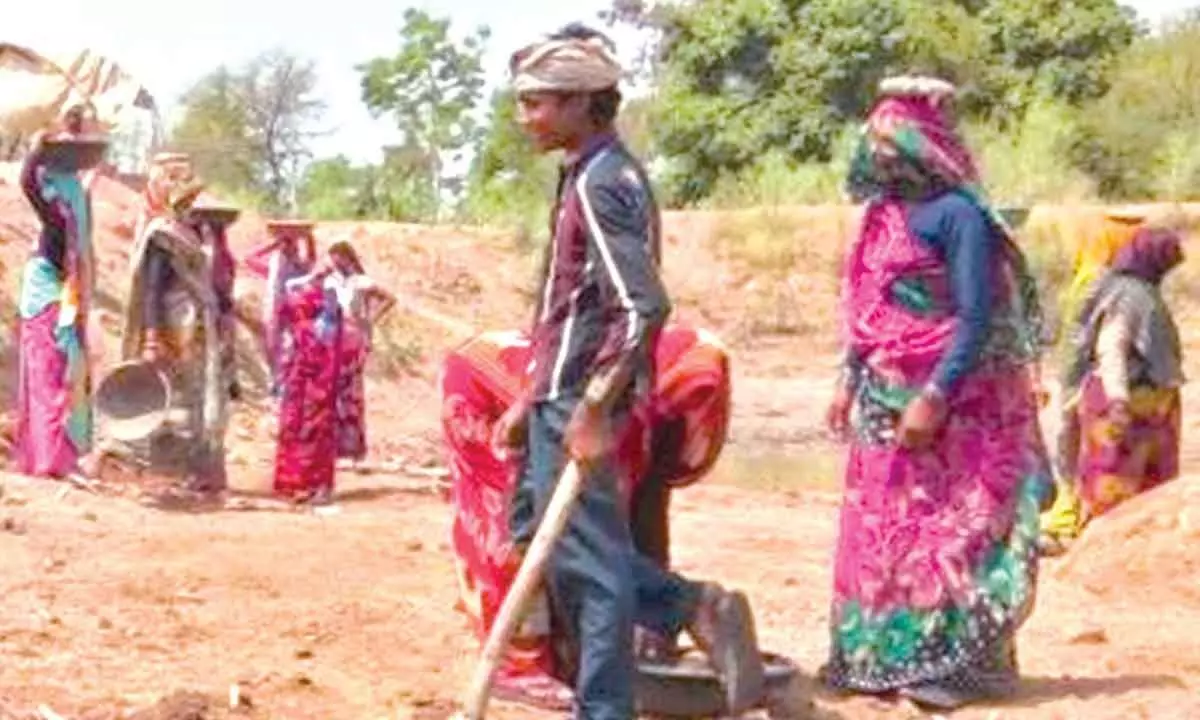Exodus for employment a way of life in backward Bundelkhand
Bundelkhand is an area which is rich in civilization, culture and mineral wealth, but the water crisis eclipses its prosperity
image for illustrative purpose

As soon as Bundelkhand is mentioned, the plight of the people from the rural areas flashes in front of the eyes as the biggest problem in this area is the exodus for employment. Like every year, this year also the people have started migrating towards the cities, the pace is a little slow, but it will pick up after Raksha Bandhan.
Bundelkhand is an area which is rich in civilization, culture and mineral wealth, but the water crisis eclipses its prosperity. The life of the people here is completely dependent on the rains - if the rain is good then the migration is less and if the rain is less then the migration is more.
Bundelkhand region is spread over Madhya Pradesh and Uttar Pradesh as seven districts from each of these states fall in this region and the condition of most of these districts is almost the same.
If one looks at the situation so far this year, there has been very little rain in Bundelkhand but with the active monsoon it is expected that this time there will be good rains here. This area was once known for its water structures, but gradually these structures became grounded and no one was left behind in looting in the name of water saving and conservation. This is the reason why the rainwater does not stop and despite sufficient rainfall, this area has to face a water crisis.
Rambabu Tiwari, a research student working on water conservation in the Bundelkhand region, says that migration has become a necessity for the hard working labourers here. "Agriculture depends on rain and the only source of income here is agriculture. The labourers have to go to the cities to work and this time also the exodus of labourers has started," he states.
"During my visit to the rural areas, I was told that the wages which the labourers were getting before the corona outbreak, have now reduced. The contractors and businessmen are calling the workers, but they are talking about paying less than what they used to pay earlier. Overall, a labourer going to work under compulsion will also be a victim of exploitation, this cannot be denied," Tiwari says.
Social worker Manoj Choubey says that migration happens in Bundelkhand, the administration knows it. In July and August, the pace of migration is very slow but after that it picks up. "In such a situation, it is necessary that the administration and the government together work out such a strategy and plan that the people here do not have to migrate."
Reacting to the issue, Ravindra Vyas, a senior journalist from Bundelkhand region, says "Many schemes came to change the picture of Bundelkhand. Even during the tenure of the UPA government, a package of about Rs 7,500 crore was approved, but this package went in vain, this can be understood by looking at the situation here. To stop the migration, it is necessary that an effective strategy should be made from now on, because the period of migration has more than a month to intensify."
"If the government of both the states provides work to the labourers through various schemes including MNREGA, then migration can be stopped, but the question is, will this happen? Otherwise, thousands of people will be seen going towards the cities with bundles on their heads, whether it is railway station or bus stand," he adds.
Vyas says "As soon as the period of migration starts, the activities of those who loot the government money and NGOs by showing the painful pictures from here in the name of social service increases. The government thinks that it has done the right thing to change the situation by allotting funds, but the ground reality is different. If an audit is done to check how much money has been spent so far for water conservation in this area, then the reality will be revealed."
According to experts on this area, by September more than 25 per cent of the population would have migrated from many villages.

